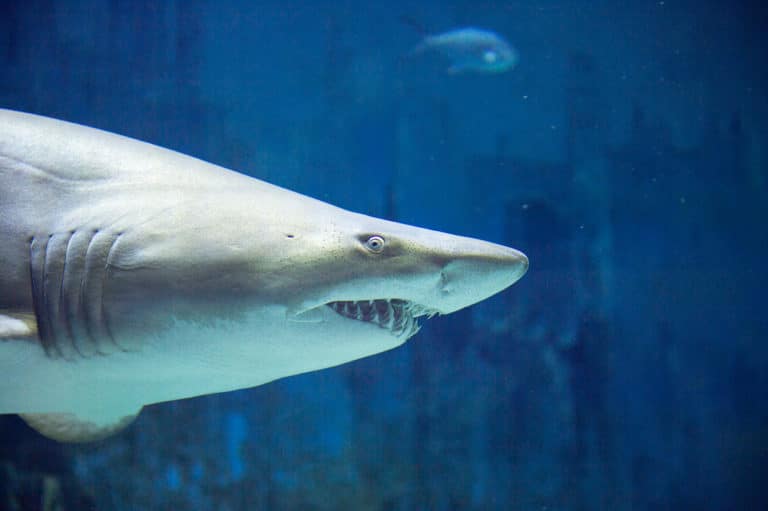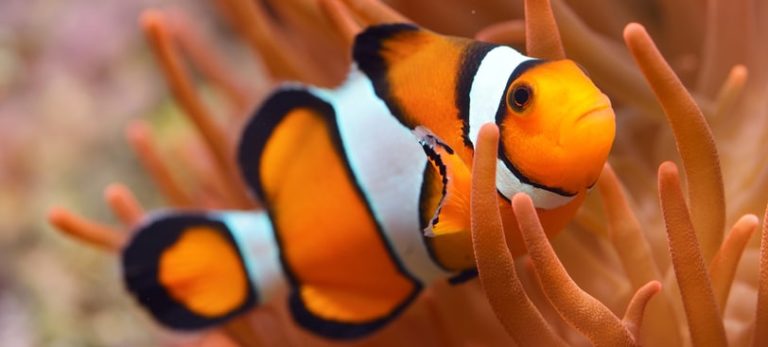LIVE aquarium cameras are incredible to watch!

I love the many benefits of watching aquarium webcams. Some people enjoy tuning in to learn different fish species, while others turn these cameras on to relax and de-stress. Personally, I think they are incredibly fascinating, and I check in a few times per week.
Below, you will find 8 unique LIVE aquarium cams.
The webcams are located in different facilities around the world, and they include some incredible animals. Get ready for everything from tropical fish to sea turtles to sharks! Before you leave today, make sure to check out one of my other LIVE camera pages:
Aquarium Cam #1: Tropical Reef Habitat in CA
This aquarium camera watches the LARGEST exhibit at the Aquarium of the Pacific in Long Beach, California.
The reef habitat contains over 350,000 gallons of saltwater and 1,000 animals!
This exhibit is designed to mimic Blue Corner, located in Palau, which is one of the most active and diverse coral reef habitats in the world.
Some of the species you may see include Zebra Sharks, Blacktip Reef Sharks, Porcupine Puffers, Olive Ridley Sea Turtles, and a large Napoleon (also called Humphead) Wrasse.
Cam #2: Wrasse and Anthias (California)
Also located at the Aquarium of the Pacific, this exhibit features Wrasse and Anthias, which are two kinds of colorful fish native to the waters of Palau.
Wrasses are found all over the world in warm tropical seas, particularly on coral reefs. Most species feed primarily on invertebrates, although some eat external parasites on larger fish. You can typically identify a Wrasse by their long dorsal fins, thick lips, and protruding lower jaw.
Anthias are generally small fish that come in a variety of colors, including pink, orange, and yellow. They mostly eat zooplankton and are almost always found close to a coral reef. Anthias are popular in home aquariums due to their bright colors and small size.
Both of these fish have a unique skill – they are protogynous hermaphrodites.
So what does that mean?
Both anthias and most wrasses can change sexes! Specifically, these fish are born female but can become male. This change happens when a dominant male in a population dies. When this occurs, typically the largest female in the group will change into a male to take its place!
Interestingly, clownfish are also hermaphrodites, but instead of changing from female to male, they make the opposite switch. When the dominant female dies, the largest male will turn into a female to take her place.
Cam #3: Kelp Forest Exhibit in CA
I really like this aquarium camera! The tank is designed to look like a kelp forest that could be found off the coast of Santa Catalina Island in California.
To correctly portray a kelp forest, the exhibit had to be built three stories high!
You can observe a variety of species, including Leopard Sharks, California Moray Eels, Giant Sea Bass, California Sheepshead, and even scuba divers! There is also a school of Pacific Mackerel that swims around. If you look closely, you can sometimes see a lone Pacific Barracuda who swims around with the mackerel. If you spot a bright orange fish, that is a Garibaldi, which is the world’s largest damselfish.
Kelp forests are incredibly important habitats for sea life. They provide shelter and food for many species, including fish, birds, algae, marine mammals, invertebrates, and plankton. Did you know that giant kelp is not actually a plant, but algae?
Just like a few other cams (#1 and #2) on this page, this exhibit is found at the Aquarium of the Pacific.
Live Jellyfish! (Cams #4 and #5)
There are not many things more peaceful than watching sea jellies slowly move through the water. (Did you know that scientists like to refer to jellyfish as sea jellies since they are not actually fish.)
Luckily, thanks to the Monterey Bay Aquarium in California, we get the pleasure of watching TWO different aquarium cams that show live jellies!
Cam #4: Moon Jellies:
These interesting creatures get their name from their translucent, moonlike bell. Most jellyfish have long, trailing tentacles, but Moon Jellies are known for their short ones. These tentacles help guide food toward a mucous layer found on the edge of the bell.
I find it interesting that different foods can change Moon Jellies into a variety of colors. For example, if they have been feeding on brine shrimp, they will show an orange tint. A pink or lavender color means they have been eating a lot of crustaceans.
Please do not fall asleep while watching. Speaking from experience, it’s easy to do! 🙂
*Depending on when you watch, the live video may be blank. This camera is only available to watch while the Monterey Bay Aquarium is open.*
Cam #5: Sea Nettle Cam:
Don’t these Sea Nettles look peaceful as they drift effortlessly through the water? Their long, lacey tentacles are almost hypnotic!
But don’t let this appearance fool you. Be happy you are not wrapped up in those tentacles. 🙂
Each one of these flowing arms is covered in stinging cells, which are activated as soon as they touch something. These barbed stingers stick into their prey tight and release a poison that causes paralysis. From there, the Sea Nettle moves its victim to its mouth which is in the center of the bell. There it is digested and any waste products also leave by way of the mouth!
*Depending on when you watch, the live video may be blank. This camera is only available to watch while the Monterey Bay Aquarium is open.*
Coral Reefs at the Georgia Aquarium (Cams #6 and #7)
Have you ever watched the show “The Aquarium” on Animal Planet? Watch Here - Amazon
It’s a documentary series showing the everyday lives of the animals and people at the Georgia Aquarium. I have found the show fascinating, and I am impressed at the gigantic size of this aquarium and the conservation work that’s accomplished there.
I was happy to find these two live cams, which display different reef exhibits at the Georgia Aquarium.
Cam #6: Indo-Pacific Barrier Reef:
- *To view this aquarium cam, you will need to go to the Georgia Aquarium website.*
You won’t believe the variety of species and colors that can be found in this exhibit! It’s almost as if hundreds of tiny paintbrushes are moving all at the same time.
Designed to look like a tropical Pacific reef, the tank holds many species of coral and fish.
Cam #7: Ocean Voyager Exhibit
- *To view this aquarium cam, you will need to go to the Georgia Aquarium website.*
This exhibit is arguably one of the BEST in the entire world.
It’s undoubtedly one of the largest at over 6.3 MILLION gallons of water and includes over 50 species living together in harmony. The main viewing window is insanely big too. Believe it or not, it measures 23 feet tall by 61 feet wide and 2 feet thick!
Here are some species, among many, that you should look for:
- Whale Shark:
- I am not joking. FOUR Whales Sharks live here! The Georgia Aquarium is one of the only places you will find these incredible animals in captivity, which are the largest fish species in the world.
- Manta Ray:
- These massive rays have fleshy appendages on the sides of their mouth that resemble horns. Their purpose is for filter feeding, as these animals only feed on plankton and small fish.
- Green Sea Turtle:
- This species is the second largest sea turtle in the world, as only the Leatherback is larger.
- Sharks:
- Multiple shark species live here, such as Blacktip Reef, Sandbar, and Zebra Sharks.
The entire list of animals is just incredible, and also includes varying species of snappers, tangs, stingrays, grunts, angelfish, eels, wrasse, groupers, and invertebrates.
Cam #8: The Tennesse Aquarium
- *To view this aquarium cam, you will need to go to the Tennessee Aquarium website.*
I have had the privilege of visiting this incredible aquarium multiple times, which is located in Chattanooga, Tennessee. My extended family lives nearby, so we always go when we visit.
The exhibit is modeled after the Flower Garden Banks National Marine Sanctuary, which is located about 100 miles off the coast of Galveston, Texas, in the Gulf of Mexico. The sanctuary is world-famous for its large variety of fish, coral, crustaceans, sharks, rays, sea turtles, and marine mammals.
On the live webcam, you should be able to spot Sand Tiger Sharks, Sandbar Sharks, Crevalle Jacks, Green Sea Turtles, among thousands of colorful reef fish.
Can you help me add to this list?
I’m sure there are many incredible live aquarium cameras that I have not included.
If there are any you can find that are worth sharing, please paste a link below in the comments section.
I am looking for streams that feature a high-quality camera, and the video doesn’t buffer often.







